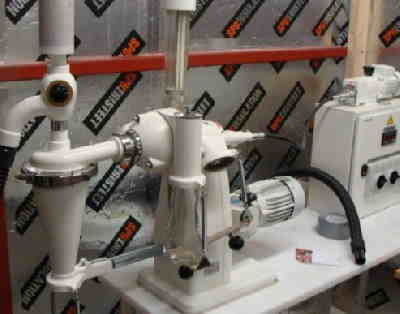Powders and granular material typically consist of particles with varying size, shape, and/ or density. In quite some applications it is desired to have a more uniform collection of particles in order to have improved performance of the material. An air classifier is capable of separating materials by a combination of differences in size, shape, and density of the particles present in the material.
Air classification is a method of separating powdery, granular or fibrous materials by settling air velocity and combined with the particle size, particle density and particle shape. Ideally, the separation effect of the air classifier is that all particles that exceed the cut point are transported into the coarse fraction and the smaller particles are transported to the fines fraction. The major interest in air classification is that it provides a method for separating small particles in a dry manner, which is very difficult to be achieved by sieving below 50 micrometres.
The typical operational process for air classifier is as follows. The inlet air is mixed with the feed material. The feed particles are subjected to a centrifugal force operating from a rotor and a drag force proved by the air. The larger and more dense particles are influenced by the mass-dependent centrifugal forces and move towards to the outside of the chamber. On the other hands, the smaller and lighter particles are more subjected to the frictional forces of the air. So the lighter particles leave the centre of the chamber and are separated by a cyclone from the airstream. The relative magnitude of two forces can be adjusted by changing the rotational speed of the disc and the inlet air velocity.
The equipment used in our field testing area is a Hosokawa multiplex classifier and the particle size separation range is from 2 micrometers to 80 micrometers. In this way, we can obtain more uniform materials in the sub-100 micrometers range which in turn can be evaluated by the customer for improved performance.
The method of characterization of separation of air classifier is by using the concept of a cut point. Ideally, all particles below cut point end up in the fine stream while all particles above the cut point follow the coarse stream. However, there will always be misplaced material, that is, a small amount of particles smaller than the cut point would be in the coarse stream and an equally small proportion of particles larger than the cut point would be in the fine stream. The misplaced material can be determined by measuring the particle size distributions of both streams. If there are misplaced materials, the classification process can be repeated until the majority of the particles appear in the correct fractions.




